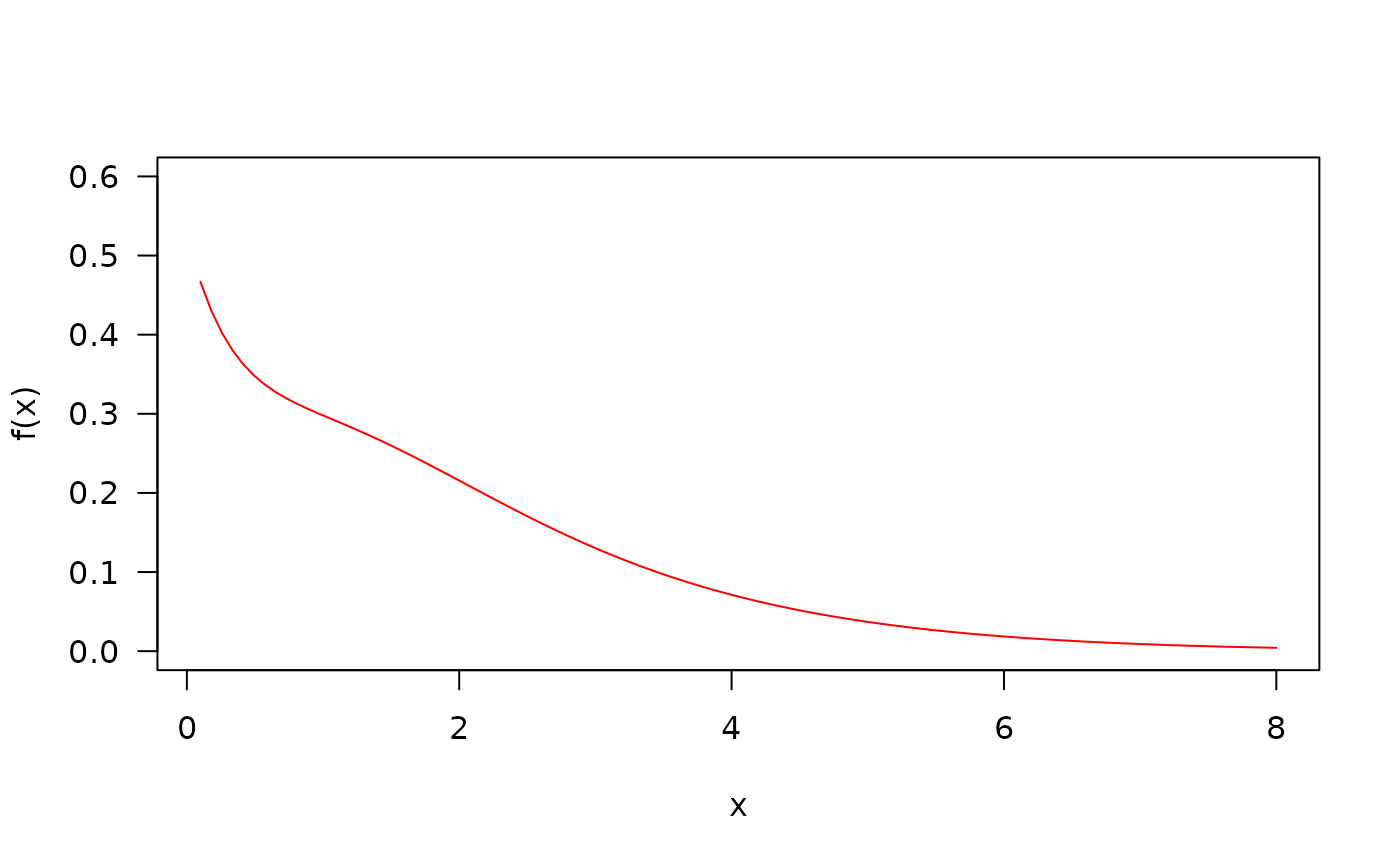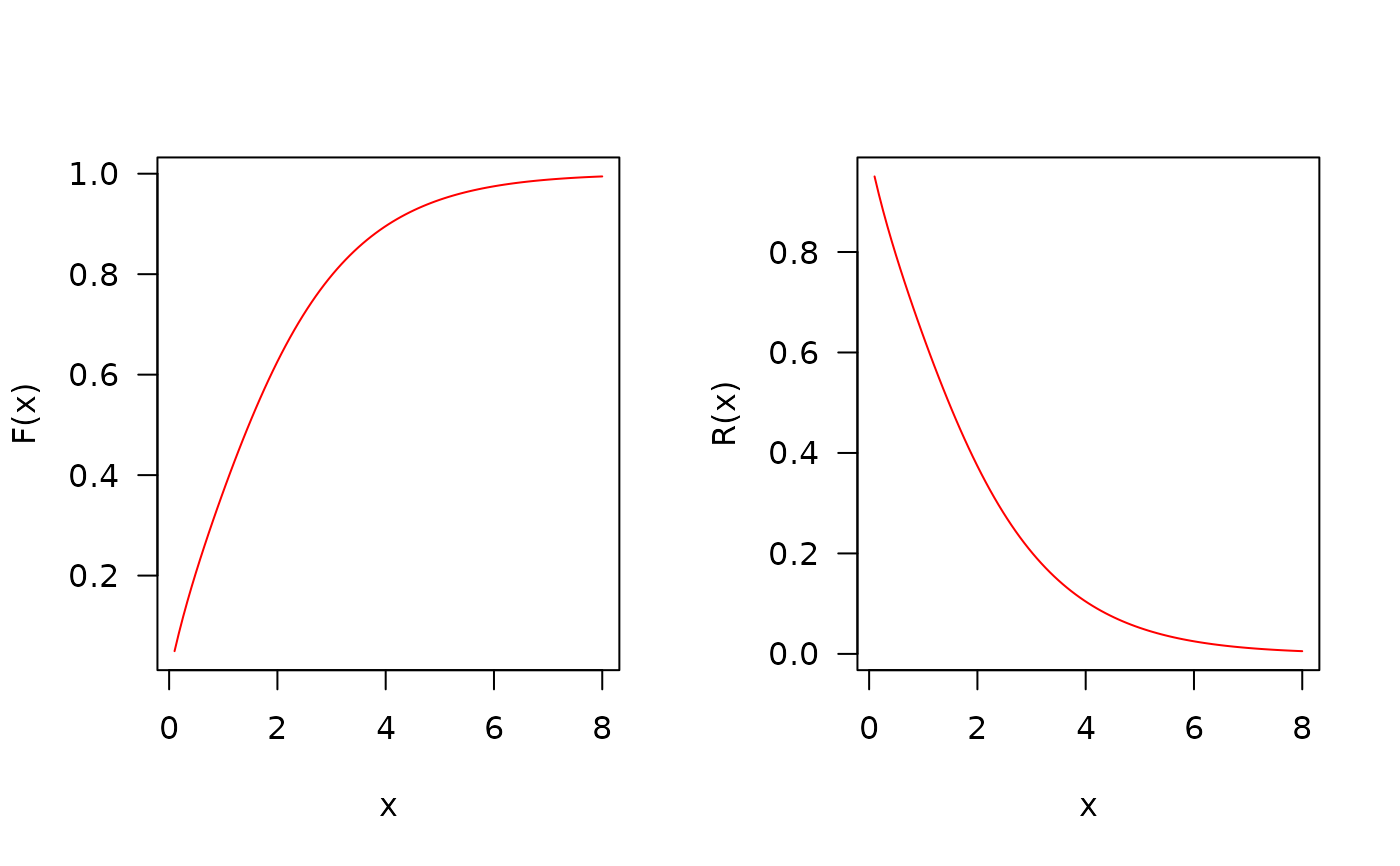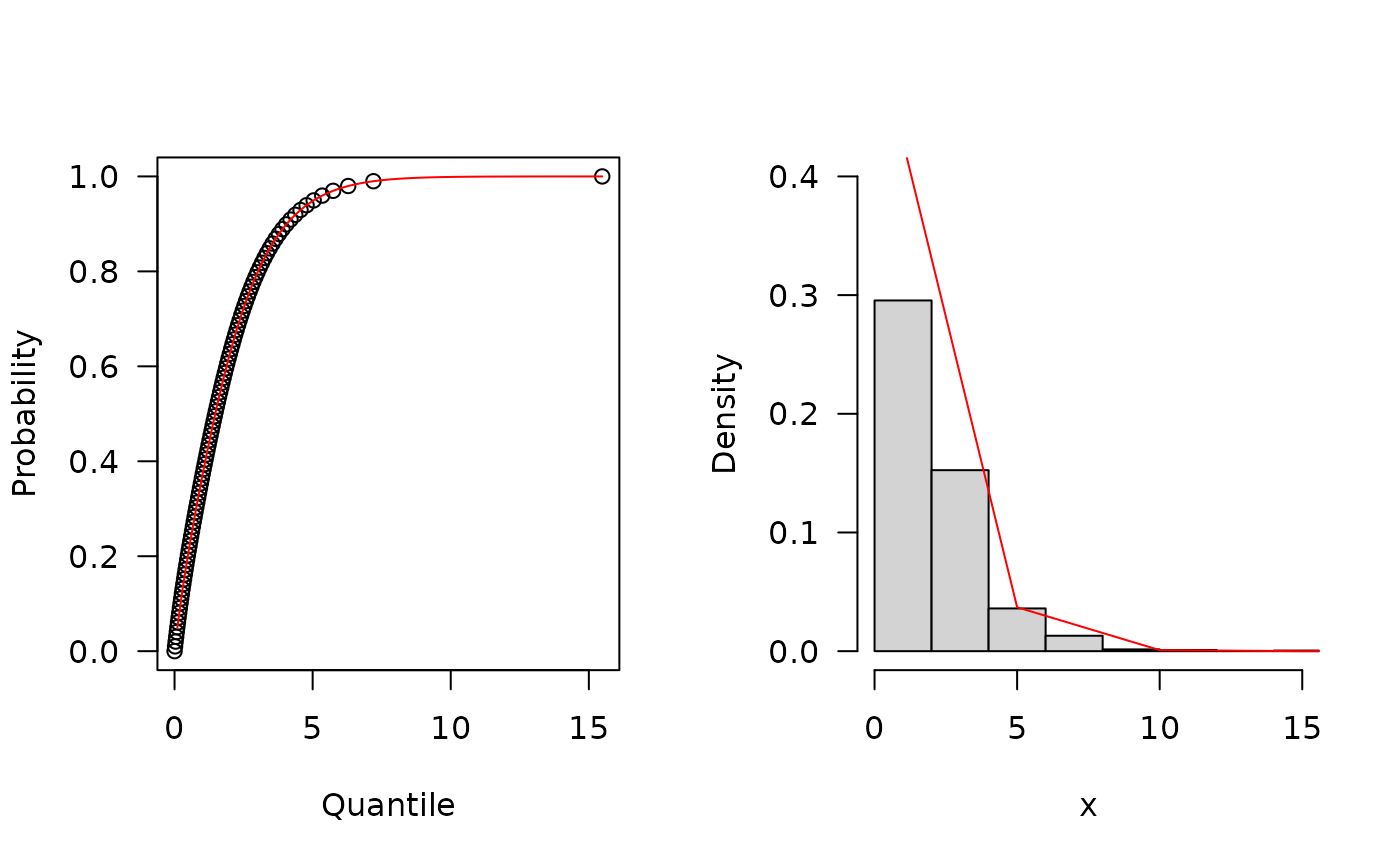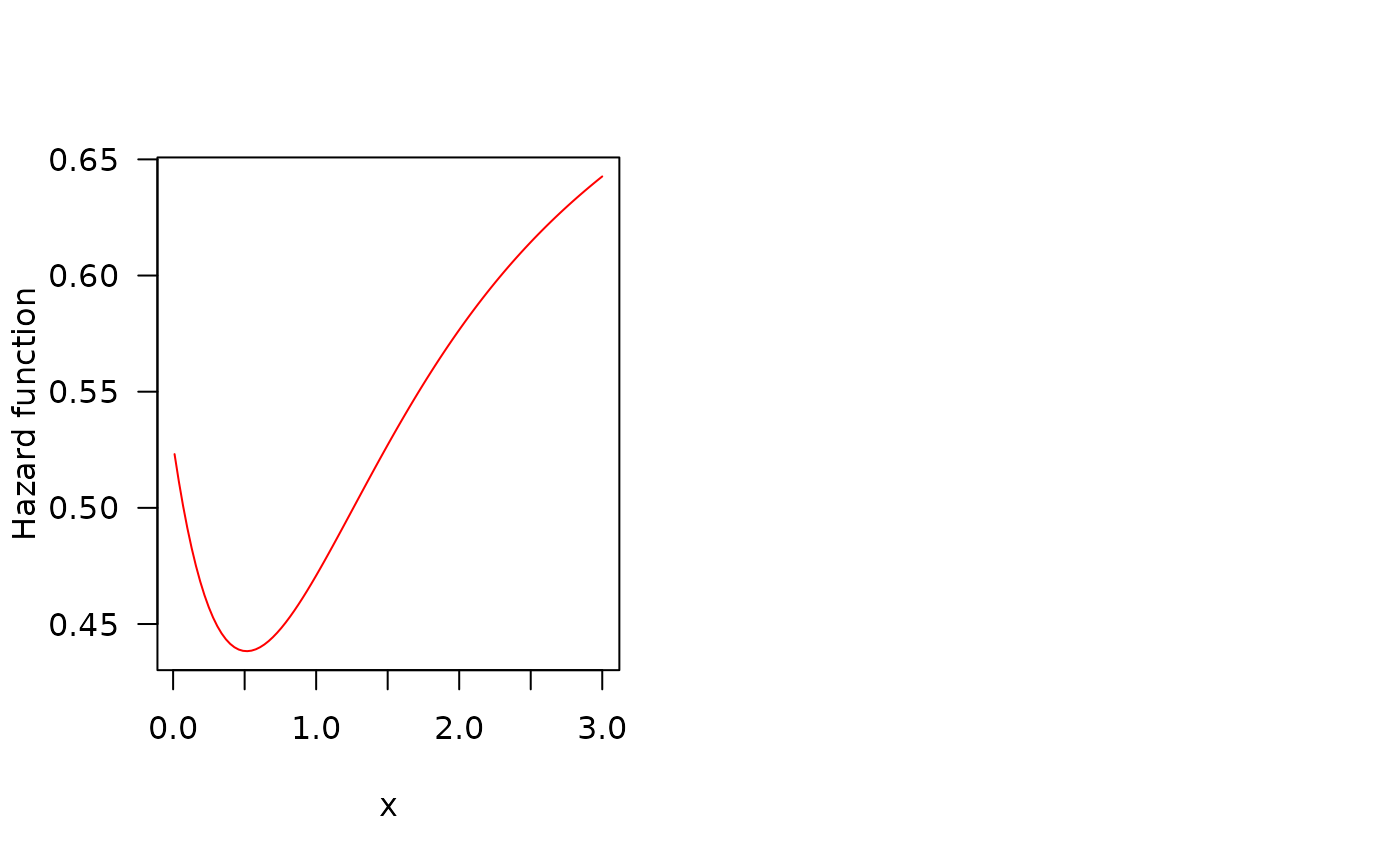Density, distribution function,quantile function,
random generation and hazard function for the Quasi XGamma Poisson distribution
with parameters mu, sigma and nu.
Usage
dQXGP(x, mu, sigma, nu, log = FALSE)
pQXGP(q, mu, sigma, nu, lower.tail = TRUE, log.p = FALSE)
qQXGP(p, mu, sigma, nu, lower.tail = TRUE, log.p = FALSE)
rQXGP(n, mu, sigma, nu)
hQXGP(x, mu, sigma, nu)Value
dQXGP gives the density, pQXGP gives the distribution
function, qQXGP gives the quantile function, rQXGP
generates random deviates and hQXGP gives the hazard function.
Details
The Quasi XGamma Poisson distribution with parameters mu,
sigma and nu has density given by:
\(f(x)= K(\mu, \sigma, \nu)(\frac {\sigma^{2} x^{2}}{2} + \mu) exp(\frac{\nu exp(-\sigma x)(1 + \mu + \sigma x + \frac {\sigma^{2}x^{2}}{2})}{1+\mu} - \sigma x),\)
for \(x > 0\), \(\mu> 0\), \(\sigma> 0\), \(\nu> 1\).
where
\(K(\mu, \sigma, \nu) = \frac{\nu \sigma}{(exp(\nu)-1)(1+\mu)}\)
Examples
old_par <- par(mfrow = c(1, 1)) # save previous graphical parameters
## The probability density function
curve(dQXGP(x, mu=0.5, sigma=1, nu=1), from=0.1, to=8,
ylim=c(0, 0.6), col="red", las=1, ylab="f(x)")
 ## The cumulative distribution and the Reliability function
par(mfrow=c(1, 2))
curve(pQXGP(x, mu=0.5, sigma=1, nu=1),
from=0.1, to=8, col="red", las=1, ylab="F(x)")
curve(pQXGP(x, mu=0.5, sigma=1, nu=1, lower.tail=FALSE),
from=0.1, to=8, col="red", las=1, ylab="R(x)")
## The cumulative distribution and the Reliability function
par(mfrow=c(1, 2))
curve(pQXGP(x, mu=0.5, sigma=1, nu=1),
from=0.1, to=8, col="red", las=1, ylab="F(x)")
curve(pQXGP(x, mu=0.5, sigma=1, nu=1, lower.tail=FALSE),
from=0.1, to=8, col="red", las=1, ylab="R(x)")
 ## The quantile function
p <- seq(from=0, to=0.99999, length.out=100)
plot(x=qQXGP(p, mu=0.5, sigma=1, nu=1), y=p, xlab="Quantile",
las=1, ylab="Probability")
curve(pQXGP(x, mu=0.5, sigma=1, nu=1),
from=0.1, add=TRUE, col="red")
## The random function
hist(rQXGP(n=1000, mu=0.5, sigma=1, nu=1), freq=FALSE,
xlab="x", ylim=c(0, 0.4), las=1, main="", xlim=c(0, 15))
curve(dQXGP(x, mu=0.5, sigma=1, nu=1),
from=0.001, to=500, add=TRUE, col="red")
## The quantile function
p <- seq(from=0, to=0.99999, length.out=100)
plot(x=qQXGP(p, mu=0.5, sigma=1, nu=1), y=p, xlab="Quantile",
las=1, ylab="Probability")
curve(pQXGP(x, mu=0.5, sigma=1, nu=1),
from=0.1, add=TRUE, col="red")
## The random function
hist(rQXGP(n=1000, mu=0.5, sigma=1, nu=1), freq=FALSE,
xlab="x", ylim=c(0, 0.4), las=1, main="", xlim=c(0, 15))
curve(dQXGP(x, mu=0.5, sigma=1, nu=1),
from=0.001, to=500, add=TRUE, col="red")
 ## The Hazard function
curve(hQXGP(x, mu=0.5, sigma=1, nu=1), from=0.01, to=3,
col="red", ylab="Hazard function", las=1)
par(old_par) # restore previous graphical parameters
## The Hazard function
curve(hQXGP(x, mu=0.5, sigma=1, nu=1), from=0.01, to=3,
col="red", ylab="Hazard function", las=1)
par(old_par) # restore previous graphical parameters
